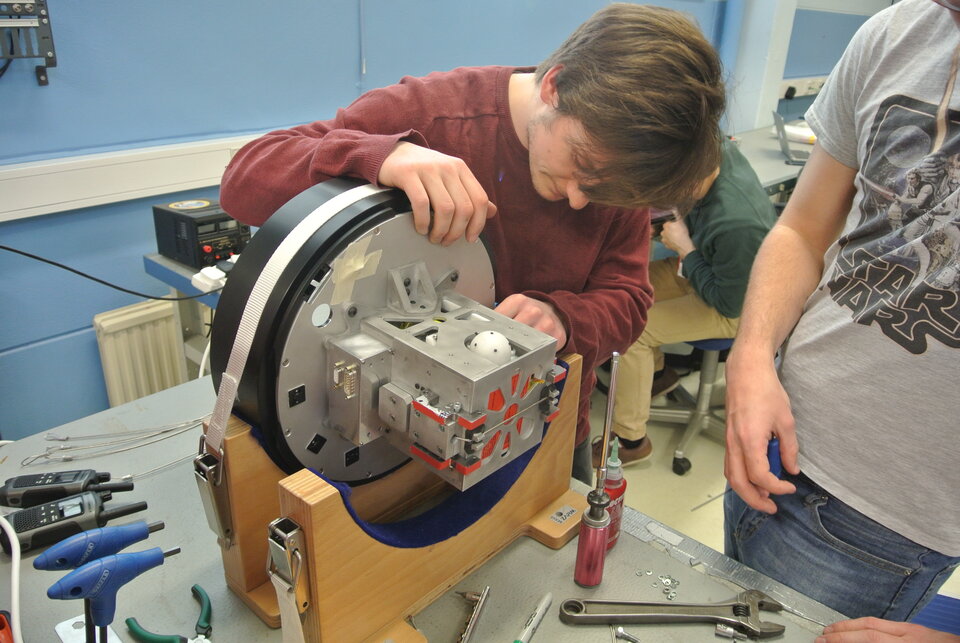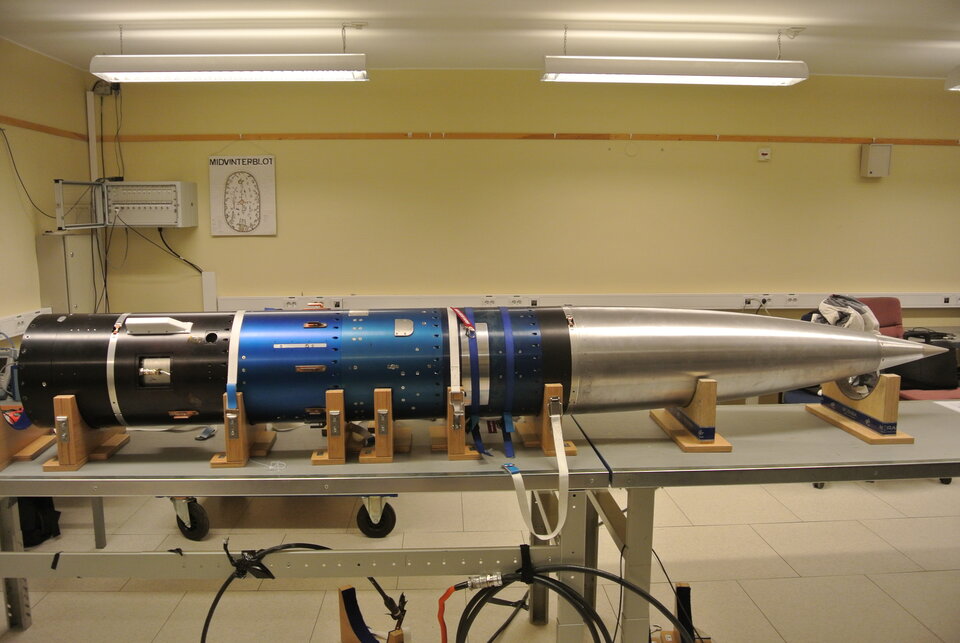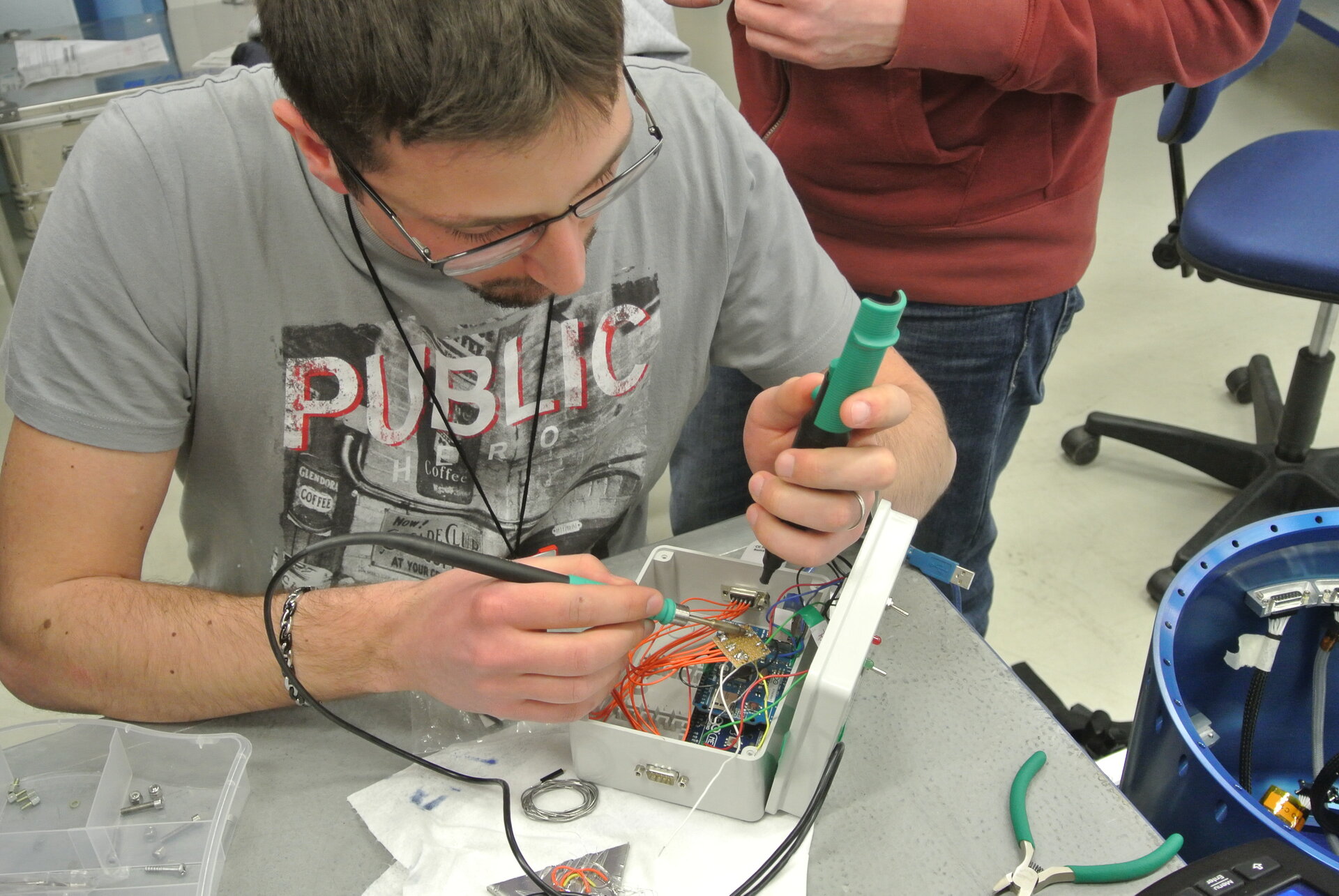University student experiments set to launch this week
Teams of university students are on the verge of seeing their experiments blast to the top of the Mesosphere. The REXUS 17 and 18 launch campaign started on 9 March 2015 with flights of the two sounding rockets expected this week.
The earliest possible launch windows will be on Tuesday 17 March for REXUS 17 and Thursday 19 March for REXUS 18. The rockets will carry seven experiments in total, designed and built by students from across Europe. Forty-two of them are attending the launch campaign.
The launches will take place at the Esrange Space Center about 40 km east of Kiruna, Sweden, where the student teams have been working for the last week.
Before launch, all experiments must undergo a bench test followed by a flight simulation to show that they can receive and transmit all the signals that will be needed during flight.
When all the tests have been performed, the payload is mated with the motor and the students go through a flight readiness review to confirm that their experiment is ready for launch. The rocket is then rolled out to the launch pad and a test countdown takes place. Everything proceeds the same as the hot countdown only without lift off. This week it is time for the hot countdowns, when the rockets will soar.

The REXUS programme offers opportunities for student experiments to be flown on sounding rockets. Each flight carries a payload consisting solely of university student experiments. Its sister programme, BEXUS offers the same opportunities using stratospheric balloons.
“All participating student teams have been working at their experiment for more than one year, and they are looking forward for the launch with great enthusiasm. They all prepared their experiments with excellent professionalism, and we keep fingers crossed hoping for the best”, said Piero Galeone (Head of ESA’s Tertiary Education Unit).
All participating REXUS student teams were selected in December 2013 to be part of the programme. Four of the REXUS 17 and 18 teams have been chosen by the Swedish National Space Board (SNSB) and ESA. The other three were chosen by the German Space Agency (DLR). The SNSB-ESA experiments cover a range of investigations:
SCRAP (Royal Institute of Technology, Sweden) will eject a cloud of copper particles so that a scatter radar in Tromsø will be able to test theories of electron density fluctuations in dusty plasmas
REM-RED (Budapest University of Technology and Economics, Hungary ) will measure the influx of cosmic radiation with altitude.
WUSAT-SOLSPEC (University of Warwick, UK) will be ejected from nosecone and gather solar spectrum data to determine our atmosphere’s composition.
PHOS (University of Pisa, Italy) will test whether large-diameter PHPs (pulsating heat pipes) could be used to control the temperature of future spacecraft.

The DLR experiments are called ACTOR (Aerogel Cells Tested on REXUS), LICOD (Light Induced Compression of Dust clouds), and SMARD (Shape Memory Alloy Reusable Deployment Mechanism). For more information check the DLR website.
“Thanks also to the experience that we acquired after running many editions of the REXUS-BEXUS Programme, at ESA’s Education Office we are sure of the high educational value of this programme, that offers unique training opportunities to the future space engineering professionals, and this is confirmed by the feed-backs that we every year receive by the participating students”, said Piero Galeone.
The next series of experiments in the REXUS/BEXUS programme were chosen in December 2014. A call for proposals will be issued in mid-June 2015, with the deadline set for mid-October.
Notes for editors:
The REXUS/BEXUS programme is realised under a bilateral Agency Agreement between the German Aerospace Center (DLR) and the Swedish National Space Board (SNSB). The Swedish share of the payload has been made available to students from other European countries through a collaboration with the European Space Agency (ESA).
EuroLaunch, a cooperation between the Esrange Space Center of SSC and the Mobile Rocket Base (MORABA) of DLR, is responsible for the campaign management and operations of the launch vehicles. Experts from DLR, SSC, ZARM and ESA provide technical support to the student teams throughout the project.




